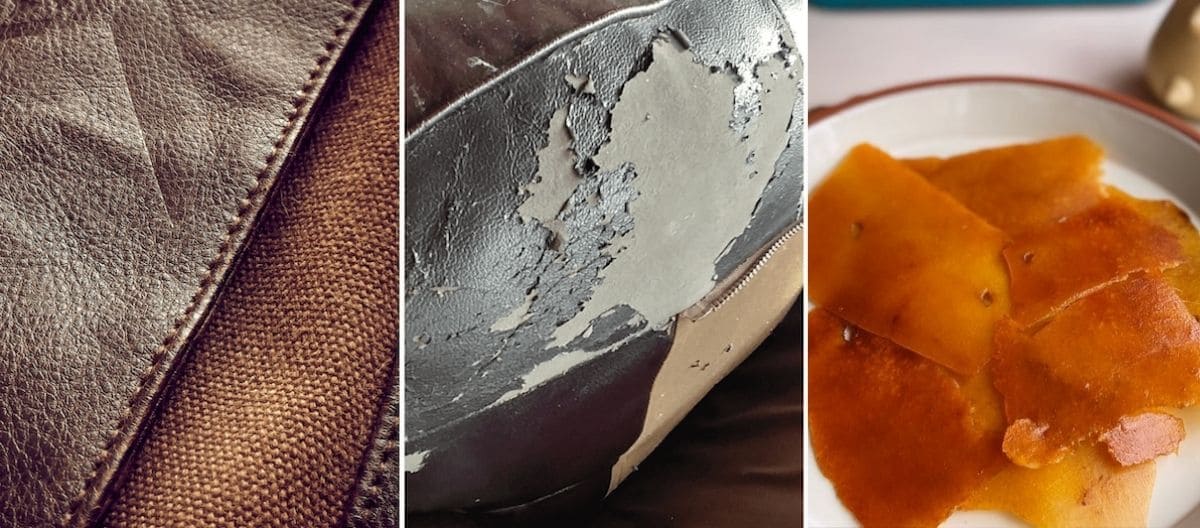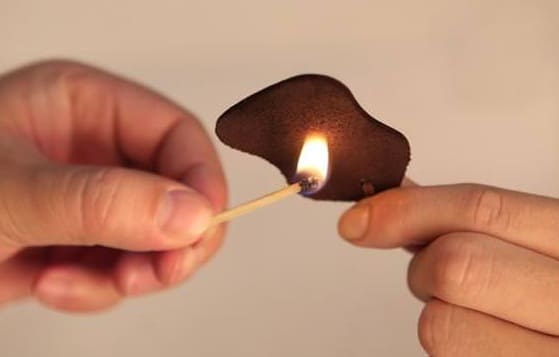 WHAAAT?
WHAAAT?
What is the difference between eco-leather (or eco-friendly leather), genuine leather, and synthetic leather? How can you recognize eco-leather from real leather? Today we will clear up your doubts once and for all, and we will teach you some tricks to distinguish genuine leather from synthetic leather.
It’s time to learn how to recognize genuine leather from synthetic leather, and to understand the difference between these two terms.
At first glance, it’s not so easy to tell if what we have in front of us is made of real leather or not, because aesthetically (to the human eye) it can look very, very similar. But what really changes is the quality, mechanical resistance (for example, thanks to the structure of animal fibers, leather is a flexible product that lasts for years without damage), fire resistance, durability, breathability, and its enormous value (enormous value? Yes! Because real leather can hardly be worked mechanically alone and, as we will see later, human intervention is required to process it).
Important Note: “In this article, we will not talk about eco-leather because eco-leather is genuine animal leather and should not be confused with artificial leather.”
 Types of leather: the pretty, the ugly, and the rich
Types of leather: the pretty, the ugly, and the rich
How to Recognize Real Leather?
Let’s start with a series of simple and effective tips to recognize real leather from fake leather, whether it’s a jacket, a sofa, a pair of shoes, or any other item.
1.- The Test of Time
In the picture below, on the right side, you can see a notebook cover made of fake leather that, with a little use, has already started to lose its stitching and shows a white fiber layer beneath the first layer. On the left side, we have an image of a bag with several years of use that, despite continuous use, remains intact in quality, and the only thing lost is the color, but the material is still fine.
 A picture is worth a thousand words…
A picture is worth a thousand words…
2.- The “Fleshy” Side of Leather
Leather has two sides: one usually called the grain side (outer side) and the other is the inner or “fleshy side.” The latter can help us understand if it is real leather or not because in 70% of cases, the flesh side in fake leather is not reproduced (probably due to additional costs) and is replaced by a mesh fabric (as in the previous picture).
When you feel the texture of the “fleshy side,” try to find a spot where the thickness of the leather is visible and examine it carefully. If you notice some fabric threads (like gauze), then it is fake or synthetic leather (see the picture below with zoom that better illustrates this peculiarity of fake leathers).

Therefore, when you buy a leather item, look carefully and find a part (no matter how small) where you can see the “B side” of the leather. If it is similar to suede and has no protruding threads, it is real leather; otherwise, my friend, you would be buying a synthetic material item.
3.- The Unmistakable Smell of Real Leather

No doubt about it! Authentic leather has a characteristic and unmistakable smell that is quite strong. Hard to explain in words, but rest assured that if you have just one new piece of genuine leather at home, anyone who enters your room will notice it by smell.
If you have two items, one made of genuine leather and the other synthetic, smell them and you will immediately notice the difference. Real leather (despite the passage of time) retains a distinctive aroma, while fake leather will smell like nothing (at best) or might emit a smell of gasoline or asphalt tar.
4.- The Fire Test on Leather

If you light a lighter or match and hold it for about twenty seconds on the surface of fake leather, you’ll see it start to “boil” and emit a strong rubber or burned plastic smell.
On the other hand, if you repeat the same experiment on a piece of real leather, it won’t boil but will wrinkle slightly and change color. Although it will emit a particular odor, it won’t smell like burned plastic or petroleum.
5.- The Water Test on Leather
 Difference in water absorption between fake leather and real leather
Difference in water absorption between fake leather and real leather
In this test, you can drop a few drops of water on a leather surface and let it sit for about thirty seconds, keeping in mind that:
The water test must be done carefully because one of the characteristics of genuine leather is that it absorbs water without altering the fiber structure (and therefore without damage). However, in daily use, leather often comes into contact with water (e.g., under the rain with a real leather jacket), and thus real leather is often treated in tanneries to be water-repellent.
If, on the other hand, you purchased a suede leather item like a jacket or shoes, you can check if it is genuine leather with the water test, in which real leather will start to absorb water within seconds.
Looking for Real Leather Garments and Custom Leather Accessories?
At Qiwa, we develop premium leather products of the highest quality, with our brand and with brands from various designers, supporting multiple entrepreneurial projects.
Learn more about our journey here and our product catalog here. We also invite you to contact us directly here.